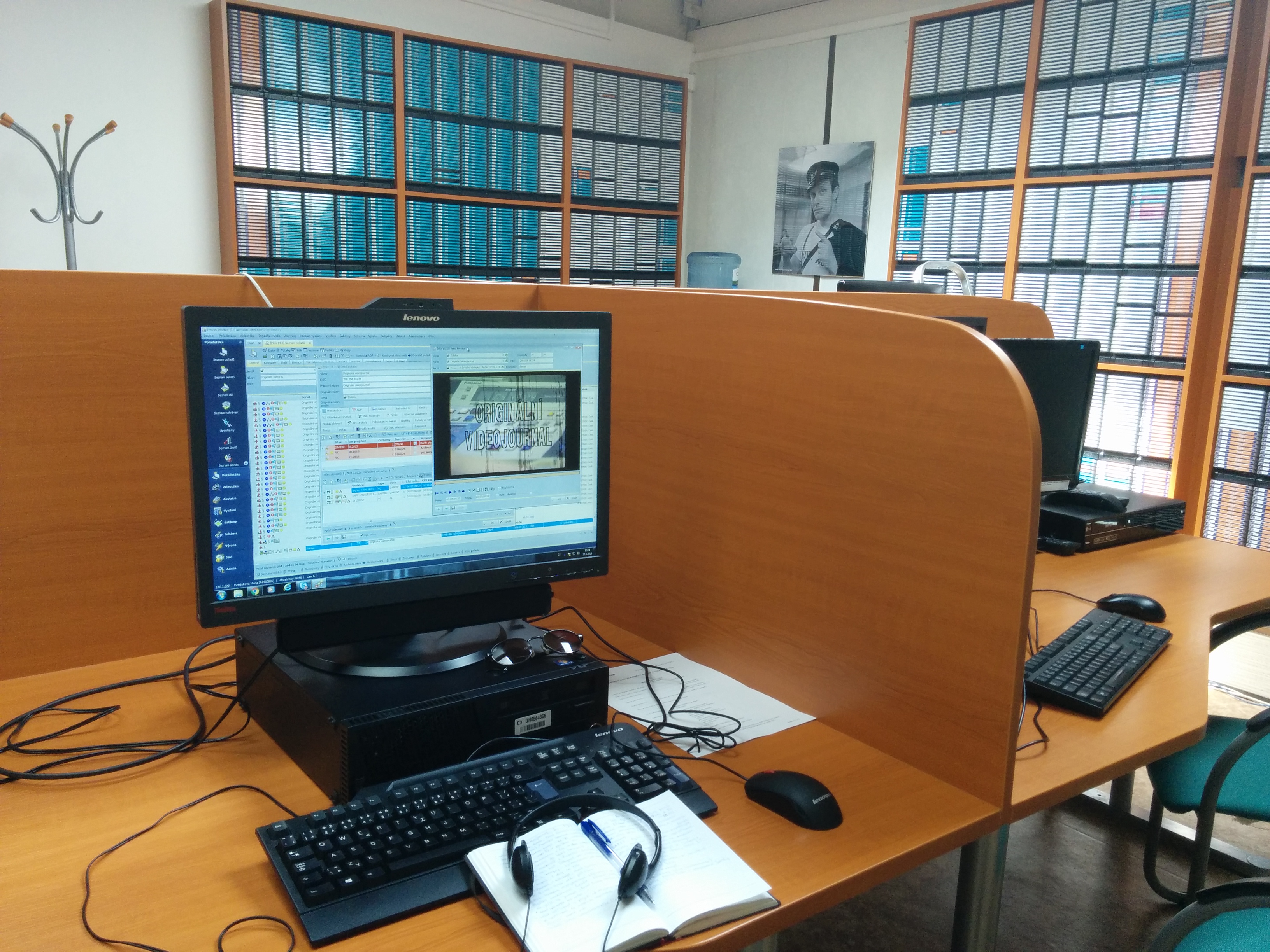Although an idea to publish audiovisual news outside state structures appeared decades before the Original Videojournal was founded, the biggest problem was with the development of technology. In the first half of the 1980s, a group of amateur filmmakers nicknamed Čeněk [Chen-yek] operated in Czechoslovakia, shooting short documentaries and reports on 16mm film. However unlike with photographs, it was more difficult to develop the film negative and the analogue materials had to be sent abroad, but then it was very difficult to return the developer film back behind the Iron Curtain. The breakthrough came in the autumn of 1985 when František Janouch, living in exile in Sweden at the time, managed to smuggle the first video camera (Sony Video8) into Czechoslovakia thanks to correspondence with Václav Havel. Later, Janouch and the Charter 77 Foundation managed to get across the border all the technology needed to shoot, edit and copy videos. Many of the filmmakers from the Čeněk group gravitated to the newly formed OVJ in 1987. Havel then withdrew himself from the project and the role of the torch-bearer was passed on to Olga Havlová, who was also in charge of the environmental section. Pavel Kačírek became the editor-in-chief and executive producer of the overall concept while also working as an editor and cinematographer. It was not uncommon for members of editorial board to have more then one creative role in the OVJ.
The making of a journalistic work itself was not forbidden, but the propagation of outrageous and subversive materials was. The Original Videojournal name was created in part as a protection against potential StB [State Security – communist secret police force] attacks because the creators could argue about the uniqueness of the work without the intention of further dissemination. But in fact, they had a device for copying the VHS cassettes in the same room where the journal was edited. Each of the regular programmes had to divide its hourly footage equally between political, cultural and ecological themes. Some of the three themes had a permanent segment and in other cases the focus was alternated. The composition of the OVJ was remarkably similar to the format of television news that (whether consciously or not) formed a significant opposing force. When an issue was completed and staff copied enough video cassette tapes, one copy traveled abroad and another part was taken by messengers who would deliver material to other parts of the republic. Dissemination did not differ much from other unofficial VHS cassettes; more copies were created by the audience themselves, despite the fact that the reproductions got worse each time they were copied.
The video cassettes that make up the main part of today's collection come directly from the creators of OVJ. Czech Television bought these materials from Original Videojournal company in 2010. They are mostly uncut recordings on the original media, though not the original issues. As the magnetic cassette tapes keep information stored for only a few decades before recordings erase itself, the material had to be digitized as soon as possible. A complete transfer to digital storage and a detailed description of all videocassette recordings was provided by archive APF CT. A year later, on its news channel Czech Television broadcast a twenty-part series of the same name, which used both the Original Videojurnal footage and interviews with OVJ authors or participants.
Original Videojournal materials are available to researchers as well as the public and contain a unique view of the world of Czechoslovakian dissent in the late 1980s. Unique shots where dissidents were filming dissidents can later be digitally restored and used as a source material for compilation film, news programmes or a historical research.

